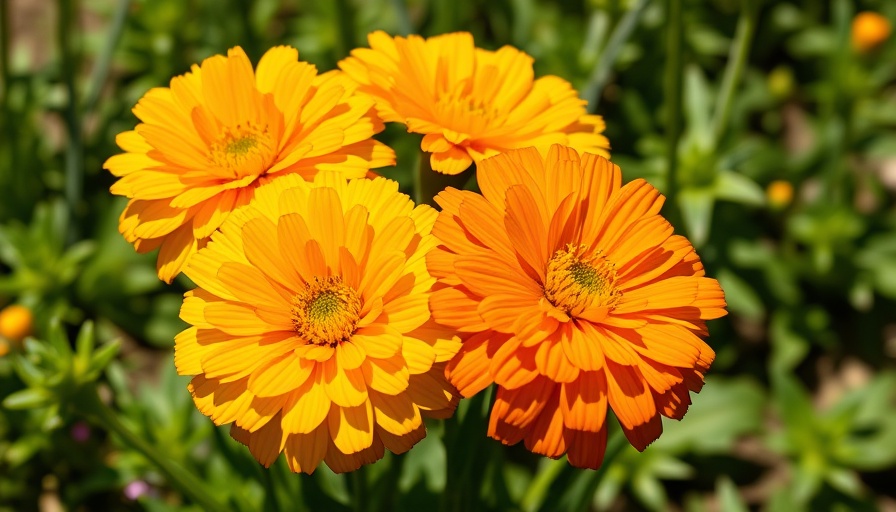
Why You Should Grow Ranunculus Flowers in Your Garden
With their luxurious petals and vibrant colors, ranunculus flowers add a beautiful touch to any garden. The Persian buttercup, or Ranunculus asiaticus, is among the most beloved varieties, often found in florists' bouquets and backyard gardens alike. Their ability to bloom in a range of colors, except for true blue, makes them an attractive choice for those looking to create an eye-catching flower bed.
Understanding Ranunculus: The Basics of Growth
Ranunculus flowers thrive in mild climates. These herbaceous perennials or annuals are usually planted in the fall in USDA Zones 8 to 11, where they can endure cooler weather and bloom beautifully in spring. Expect a stunning display that can last up to seven weeks! If you live in colder areas, don't fret: plant them in early spring for a vibrant late spring or early summer burst of color, then store the tuber-like roots over the winter for replanting next year.
Essential Gardening Tips for Ranunculus
Plant ranunculus in well-draining soil rich in organic matter, and find a sunny spot in your garden. They prefer full to partial sun exposure to really thrive. As you care for these beauties, ensure you're watering them correctly, as over-watering can lead to rot.
Choosing the Right Cultivars
While R. asiaticus captures the hearts of many, both R. repens and R. ficaria are notable for their attributes, such as potential use as ground covers. Not only are these cultivars ideal for formal garden setups, but they also work well in casual landscapes. Researching and selecting the right cultivars for your specific climate is essential for achieving optimal growth and blooms.
Pests and Diseases: Keeping your Ranunculus Healthy
Common pests, such as aphids and spider mites, can invade your flower beds, while diseases like powdery mildew may manifest under unfavorable conditions. Notice signs early and employ preventive measures, such as maintaining good airflow around the plants and ensuring proper soil drainage.
Unique Ways to Use Ranunculus in Your Landscape
Ranunculus flowers are perfect for creating cut flower arrangements due to their extended vase life. Additionally, they can serve as standout features in a mixed flower bed or designated garden spots, bringing both beauty and allure. As you plan your garden layout, consider varying the heights and arrangements of these flowers with other plants for a dynamic and stunning visual effect.
Bringing it All Together: Design, Care, and Maintenance
From selecting the right location to understanding the care required, gardening with ranunculus can be both fun and rewarding. These flowers not only beautify your garden but also attract various pollinators, contributing positively to your local ecosystem. Engaging with gardening enhances mental well-being and encourages a peaceful outdoor experience.
Final Thoughts: Making Ranunculus Part of Your Garden Journey
Incorporating ranunculus flowers into your garden is a worthwhile endeavor that can bring joy and color to your home. By following these practical gardening tips and staying proactive about pest control, your ranunculus plant can flourish for many seasons to come. Ready to start your gardening journey? Embrace the sustainable practices that not only beautify your space but also help promote a healthier environment!
 Add Row
Add Row  Add
Add 




Write A Comment